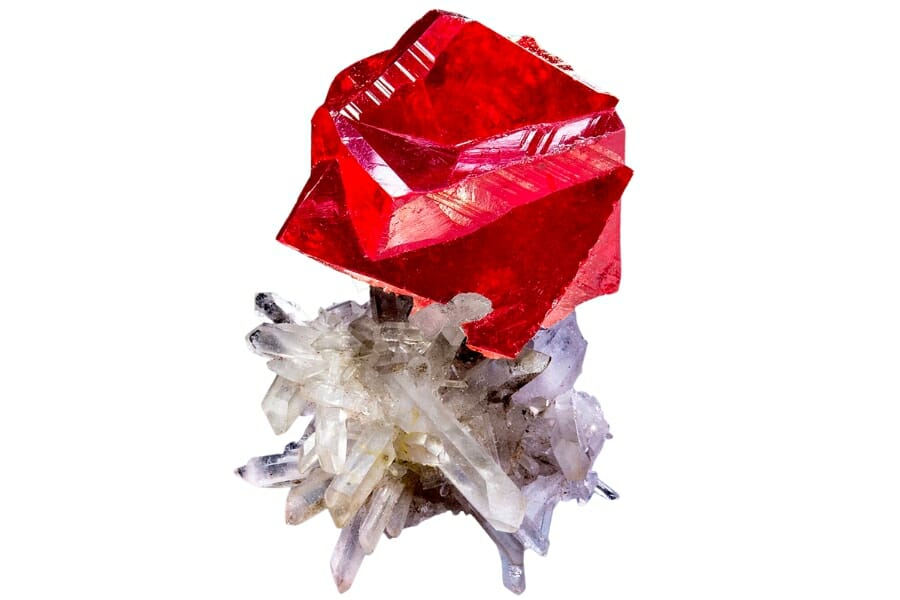Cinnabar is a vibrant and fascinating gem that will amaze you with its looks. If you’re curious to know what color cinnabar is, then buckle up, because you’re in for a thrilling ride!
While this gem is most famous for a single color, that’s not all! Sometimes, it can show in different interesting hues.
What’s even cooler is that it can be found all around the world. So whether you’re hiking in the mountains of Spain or exploring the caves of China, you might just stumble upon this fabulous gem.
Intrigued? We knew you would be! Join us as we dig deeper into the wonderful world of cinnabar colors. Trust us: if you thought asking “What color is cinnabar?” was a simple question, you haven’t seen anything yet!
The Most Common Cinnabar Color
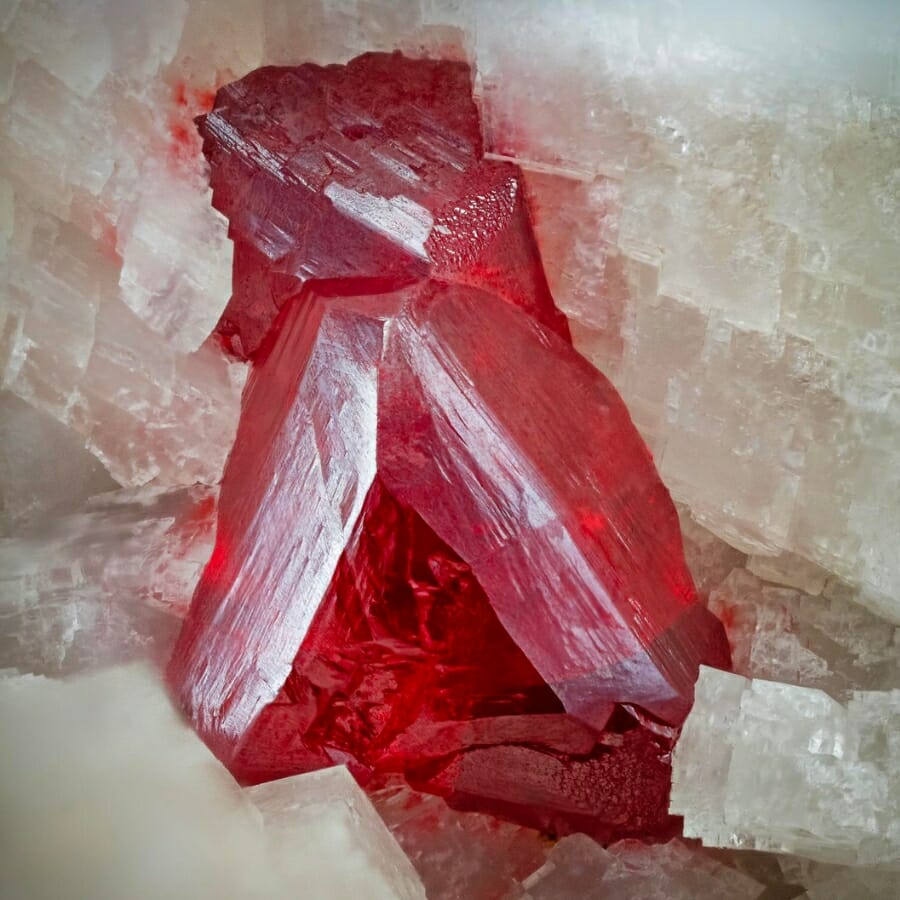
The most common color cinnabar exhibits is a brilliant shade of bright red, which can be so bright it practically glows! Simply put, it’s among the most stunning red gems out there.
Imagine a fiery red that’s as bold as a stop sign or a cherry-flavored lollipop, and you’re getting close to what it looks like. This eye-catching red is what makes cinnabar stand out.
This striking color is due to mercury and sulfur, which combine to form mercury sulfide. As mineral-rich fluids come in contact with rocks, cool down, and begin to solidify, they form cinnabar’s bright red crystals.
The appearance of cinnabar is not only about its color but also its luster. It often has a shiny, almost greasy look that adds to its charm.
In crystal form, it can have a beautiful translucent quality that catches the light, making it appear even more vibrant. When found in nature, it can form in veins and seams, snaking through the host rock like a ribbon of bright red.
As mentioned above, the vibrant red color cinnabar has made it a prized pigment in ancient times. People would grind it into a powder to create a paint called vermilion, which was used to decorate precious artworks, temples, and even the bodies of emperors!
In modern times, cinnabar’s value comes from the mercury it contains. Mercury is used in various products and processes, like in the manufacturing of electrical switches and even in some medical instruments.
The Different Colors Of Cinnabar
Aside from cinnabar’s bright red color, this gem also comes in other hues that are just as interesting as they are pleasing to the eyes.
Brownish-Red Cinnabar
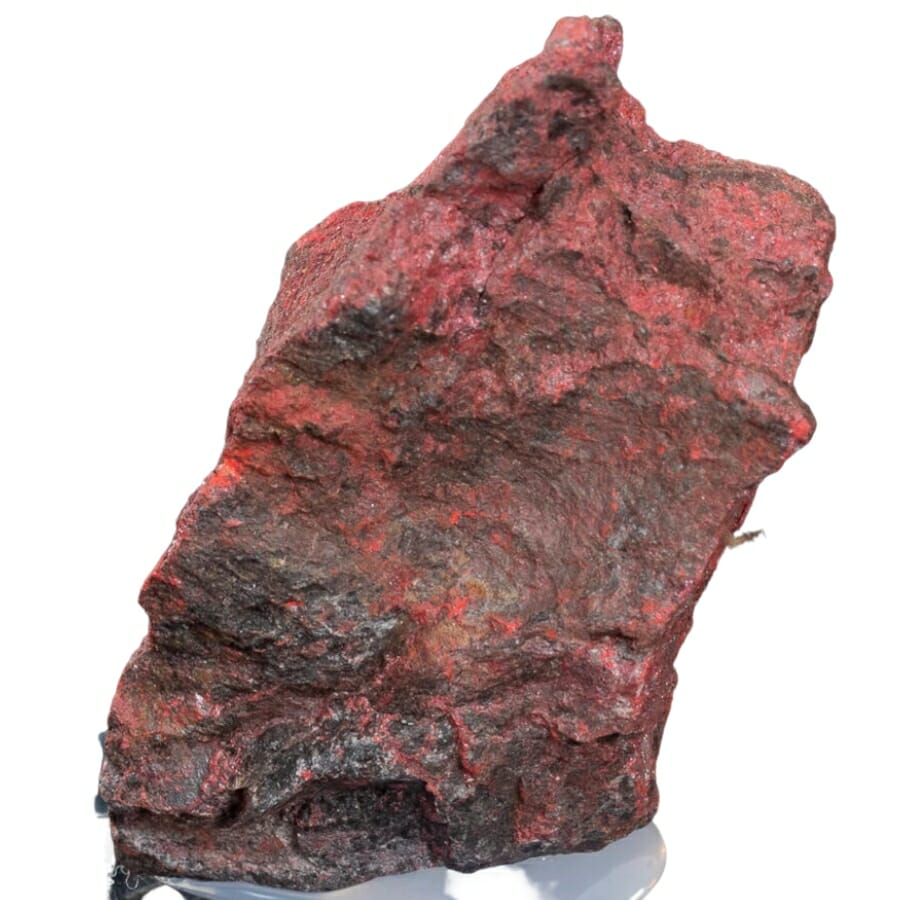
Brownish-red cinnabar is as intriguing as it’s beautiful. While the bright red color is what most people think of this gem, its brownish-red version has its own unique charm.
Imagine the deep red of a cherry mixed with the earthy tones of a clay pot. That’s what brownish-red cinnabar looks like! When you look at it, you can see hints of brown swirled with red, giving it a rich and complex appearance.
How did this cinnabar’s color exist? The presence of other minerals and elements aside from mercury and sulfur gives this gem that brownish hue.
The brownish-red color can also appear in a fine-grained or powdered form. Imagine taking a bright red specimen and grinding it into a powder. As it breaks down into smaller pieces, the color might start to look more brownish than bright red.
The next time you’re exploring rocks and minerals, keep an eye out for brownish-red cinnabar!
Where you can find brownish-red cinnabar
Brownish-red cinnabar can be found in various locations around the world, including Spain, China, Peru, Mexico, and the U.S., specifically in California, Nevada, and Texas.
In some regions, the interaction with other minerals or the specific conditions of the deposit, such as temperature and pressure, can also lead to this unique shade.
It’s worth noting, though, that brownish-red cinnabar isn’t confined to a specific location. Instead, it can be found in different deposits of this gem around the world.
To learn more about the specific areas where you can find cinnabar, refer to our complete guide to the best rockhounding locations.
Dark Red Cinnabar
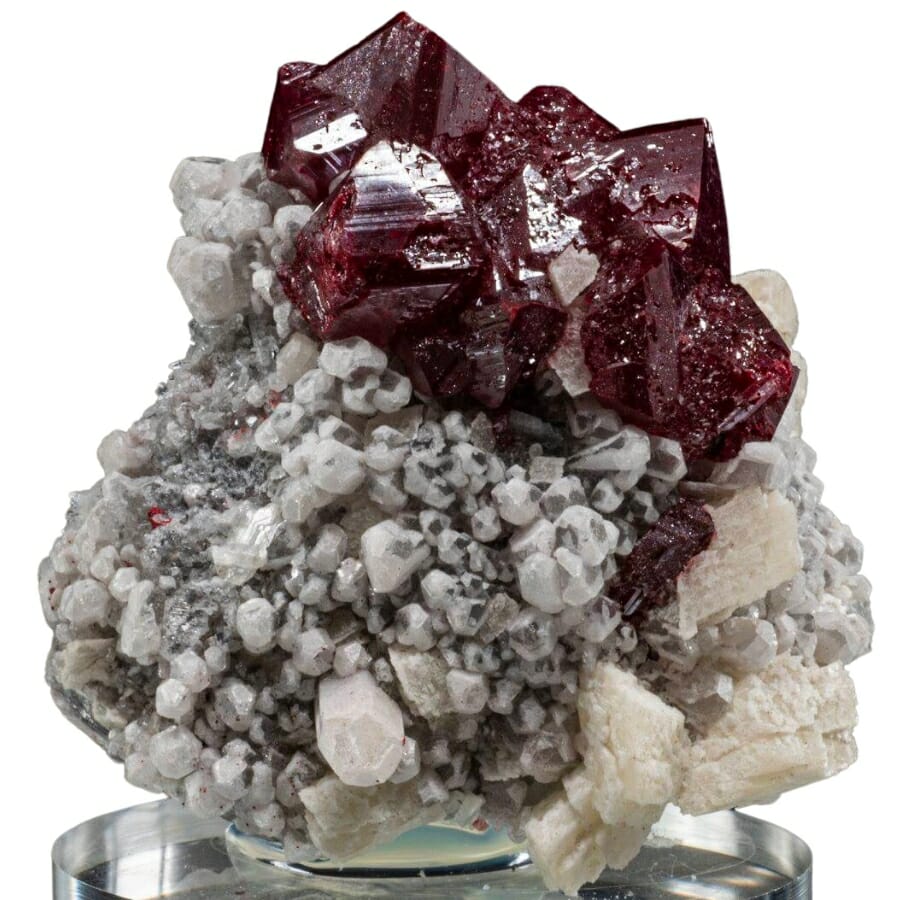
Dark red cinnabar is like the mysterious sibling of the more well-known bright red cinnabar. It has a deeper and more intense color that distinguishes it.
When you think of dark red cinnabar, picture the color of a ripe pomegranate or the deep red of a sunset. This isn’t a bright and flashy red; it’s a color that’s rich and profound. It has a certain elegance to it, like a velvet cloak or a royal robe.
This cinnabar color comes from the combination of mercury and sulfur influenced by the size and shape of the crystals. Bigger crystals often reflect light differently, giving them a darker appearance.
Like other colors, dark red cinnabar has been used for various purposes throughout history. Its deep color made it a valuable pigment, and it’s also an important source of mercury, used in many industrial applications.
Where you can find dark red cinnabar
Dark red cinnabar can be found in the same regions where bright red cinnabar is discovered, including parts of China, Spain, and the United States.
The difference in color is often more about the conditions during the formation of the mineral rather than where it’s located. But if you’re curious to know more locations where cinnabar is found, check out our guide to finding gems near you.
Reddish-Orange Cinnabar
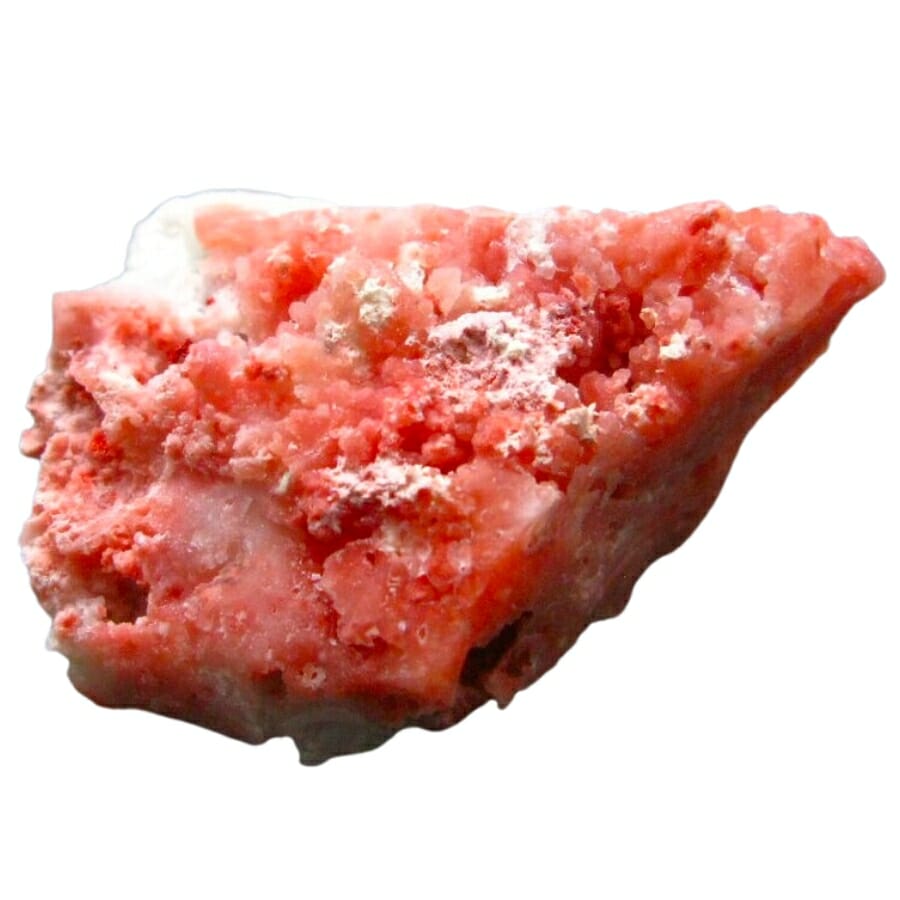
Reddish-orange cinnabar is like a beautiful sunset captured inside a rock. Its red hue, instead of being bright, has a touch of orange to it.
This unique color comes from the way cinnabar is made. Regular specimens are a mix of mercury and sulfur, and they usually look bright red. But sometimes, other things get mixed in, like different minerals or tiny bits of other rocks. These little extras can change cinnabar’s color from red to reddish-orange.
The size and shape of the crystals can also affect the color. Bigger crystals might look more orange, while smaller ones might be more red.
Think about making a painting. If you mix red and orange paint together, you get a new color that’s a little bit of both. That’s what’s happening with reddish-orange cinnabar.
Where you can find reddish orange cinnabar
You can find reddish-orange cinnabar in places where cinnabar is usually found, like China, Spain, and parts of the United States. It’s a bit rare, so it’s a special find for rock collectors and people who love to study the Earth.
If you want more guidance on where to look for cinnabar, visit our comprehensive guide on where to find crystals.
Coated or Treated Cinnabar
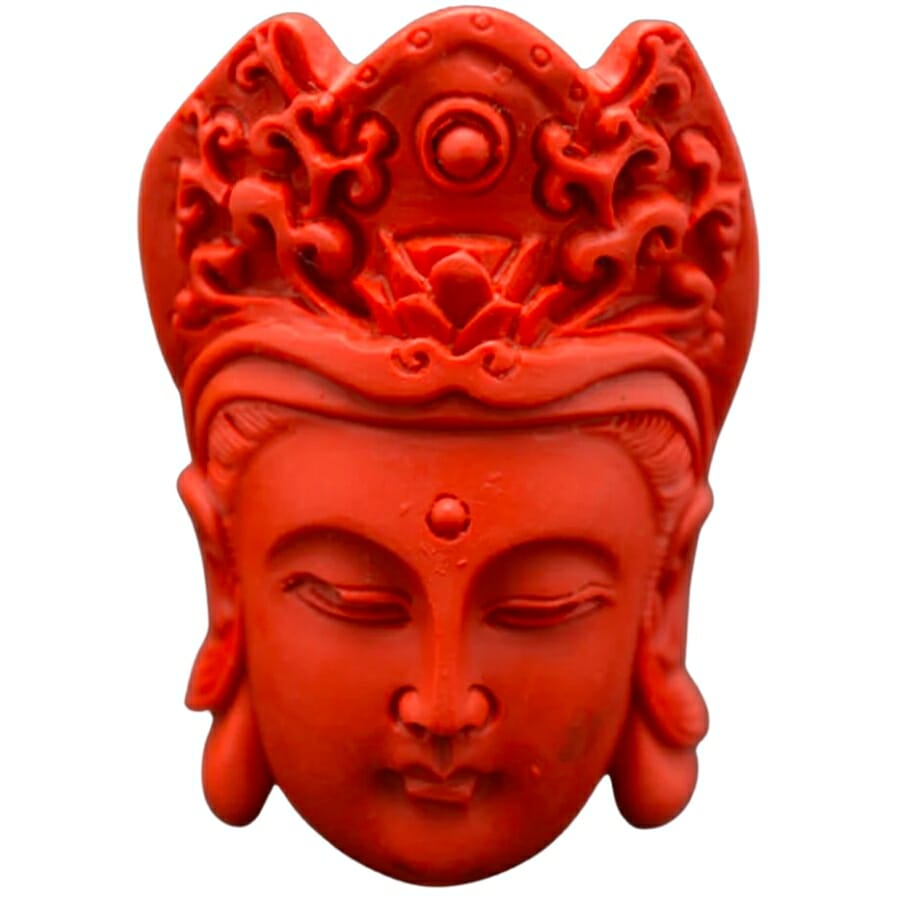
Coated or treated cinnabar might not be something you hear about often, but it’s an interesting twist. By adding special coatings or treatments, this gem can take on different colors and appearances.
Imagine a piece of cinnabar that’s been coated with a shiny layer. This might be done to make it look smoother or to give it a special color. For example, a clear coat could make the natural red or reddish-orange color of cinnabar look even brighter. It’s like adding a layer of gloss to a painting, making the colors pop out more.
Sometimes, cinnabar might be treated with other chemicals to change its color completely. This could turn it into a whole different shade, like blue or green.
Scientists and artists can do this by using different chemicals that react with the cinnabar in a particular way. It’s like a science experiment mixed with art, turning an ordinary rock into something extraordinary.
Coated or treated cinnabar is a great example of how science and creativity can come together.
Where you can find coated or treated cinnabar
These coatings or treatments are done in a lab and for different reasons. Maybe a piece of cinnabar is being put on display in a museum, and they want it to look extra special. Or perhaps an artist wants to use it in a piece of jewelry but needs it to be a specific color. By treating the cinnabar, they can make it look just right.

